Air is the oxidant for the flame. We use filtered house air in our lab. The
pressure must be between 32 and 65 psi for proper operation.
You should not have to adjust this regulator as it is left on all of the time.
|
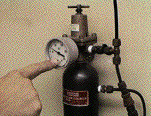
|
Turn
the main valve of the acetylene tank on. Observe that the main tank pressure
is well above 75 psi. If the tank pressure is near or below 75 psi, have the
technician replace the tank with a fresh one. It is dangerous to use an
acetylene tank below 75 psi because of the way the gas is stored in a solvent
within the tank.
|
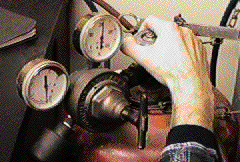
|
| If
the main tank pressure is well above 75 psi, turn the regulator valve clockwise
until the outlet pressure shows 12 psi.
Tap on the gauge glass frequently as you turn up the pressure, since the needle
tends to stick a bit.
|
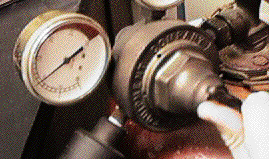
|
| Turn
the oxidizer control to the AIR position. Observe that the air flow meter
reads 6 or greater. You should not have to adjust the air flow control to get
this flow rate since the manufacturer has preset this flow rate as a minimum
value.
Check again that the hood has been turned on. We will add the acetylene and
light the flame in the next few steps.
|
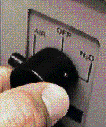
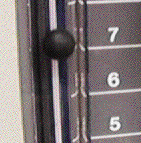
|
Turn
the fuel control valve until the flow meter reads between 2 and 3.
|
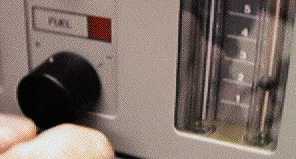
|
| Press
and hold the Ignite button until the flame lights.
If anything does not seem right to you, turn the flame off by turning the fuel
flow control clockwise until the needle valve seats. With the fuel choked off,
the flame will go out.
|
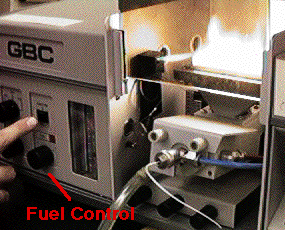
|
| Adjust
the Fuel control until you have the type of flame called for in your analysis.
If Fuel-Rich or Fuel-Lean is not specified, then turn down the fuel until the
yellow glowing carbon particles just vanish from the flame.
This will be the Stoichiometric setting.
Reducing the fuel flow past the Stoichiometric point will produce a Fuel-Lean
flame.
|
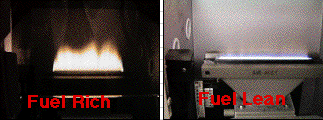 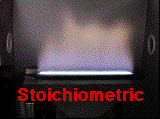
|
| If
you have not already done so, place the inlet tube for the nebulizer into a
container of dust-free distilled water.
Aspirating room air is a bad idea, since the dust in the air can clog the very
small inlet to the nebulizer.
You are now ready to begin analyses of your samples and standards.
|
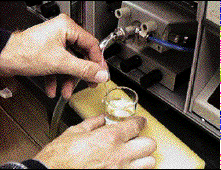
|
| Remember,
if you need to turn the flame off, do so by turnining off its FUEL. Rotate the
fuel control clockwise until the valve seats. The flame will quietly go out.
After the flame is out you can turn the air control off as well.
|
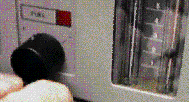
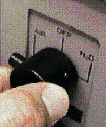
|











